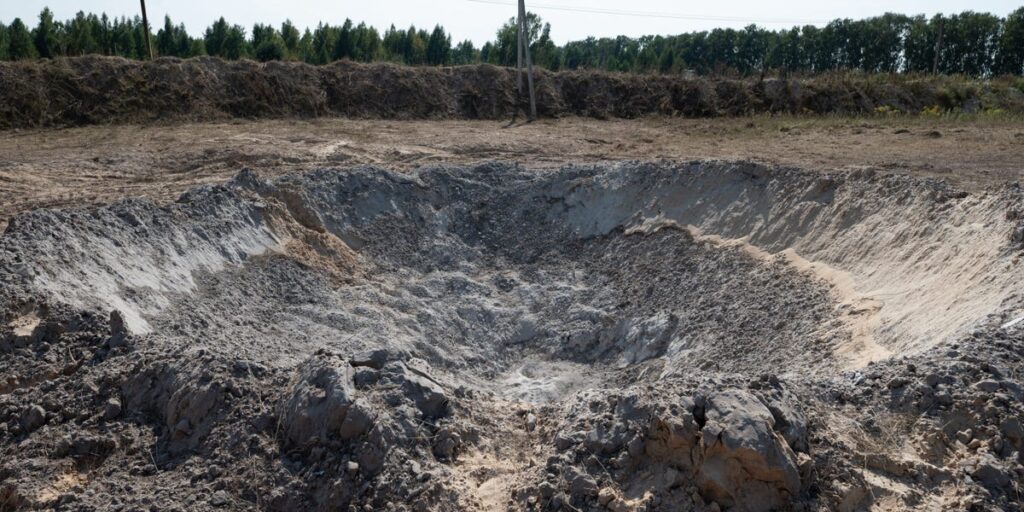- Ukraine’s spy chief said Russia helped North Korea fix a severe accuracy flaw in its KN-23 missiles.
- Often compared to the Iskandar-M, it’s a ballistic missile with a range of over 400 miles.
- Budanov cited the KN-23 as an example of how Pyongyang is gaining from its fight against Ukraine.
North Korean KN-23 missiles had an accuracy flaw removed by Russian technicians as they were deployed against Ukraine, said Kyrylo Budanov, the head of Ukraine’s intelligence agency.
Speaking to the South Korean media outlet Chosun Ilbo, Budanov cited the missile as an example of Pyongyang’s combat tech receiving major improvements from the active fighting.
“Initially, its accuracy was severely flawed, with an error margin of 500 to 1,500 meters,” he said in the interview, published on Monday. “But Russian missile experts made technical modifications, resolving the issue. The missile is now significantly more precise and a far greater threat.”
The KN-23 is the missile’s US designation, but North Korea has named it the Hwasong-11A. The solid-fueled ballistic missile is believed to have a range of about 430 miles and is often compared to Russia’s Iskandar-M, with a typical payload of up to 1,100 pounds.
It’s one of North Korea’s newer weapons, debuting during a parade in 2018, with a range that would allow it to strike deep into South Korea. In July, Pyongyang said it tested an advanced version of the missile, the Hwasong-11Da-4.5, saying it can carry a 4.5-ton warhead.
The White House said in January 2024 that Russia had fired multiple North Korean short-range ballistic missiles against Ukraine, and it’s widely believed that these were the KN-23 and KN-24.
Referencing the strikes, South Korea’s ambassador to the United Nations said at the time that North Korea was using Ukraine as “a test site of its nuclear-capable missiles.”
During his interview with Chosun Ilbo, Budanov said collaboration between Russia and North Korea was “reaching the highest levels,” warning of a heightened threat to Pyongyang’s enemies in Asia.
“North Korea is using this war to gain combat experience and modernize its military technology,” he told the outlet. “This will have lasting consequences for the security landscape in the Asia-Pacific region.”
North Korea’s lessons from the war
The West and Seoul have been especially concerned by what they estimate is a deployment of 12,000 North Korean special forces in Kursk.
Western intelligence says about 4,000 of those soldiers have since been wounded or killed. However, Pyongyang’s direct involvement has ignited fears that its surviving troops will pick up invaluable combat experience and knowledge of modern war.
Vadym Skibitskyi, the deputy chief of Ukraine’s intelligence agency, told Chosun Ilbo that the North Korean troops are learning quickly.
“Their combat effectiveness has improved dramatically, not only with conventional weapons like tanks but also with advanced systems such as drones,” Skibitskyi told the outlet.
Pyongyang’s soldiers were initially reported to often charge headlong at Ukrainian positions in high-casualty assaults, indicating a force that’s primed to aggressively follow orders in the face of death.
In the early days of North Korean troop encounters, Ukrainian sources also said that Pyongyang’s troops didn’t appear to know that drones could kill them.
But there are some clues that they’re adapting.
In January, Ukraine’s special forces released what it said were excerpts of a North Korean soldier’s diary, one of which described a tactic of sending a soldier into the open to bait drones that could then be gunned down by comrades.
In exchange for his troops and weapons, North Korean leader Kim Jong Un is believed to be receiving technical assistance from Russia for his space and arms programs, as well as cash, raw materials, and food.
Their collaboration underscores a budding relationship between Pyongyang and Moscow, as both seek to lean on each other to help weather international sanctions imposed on their economies.
Read the full article here
















